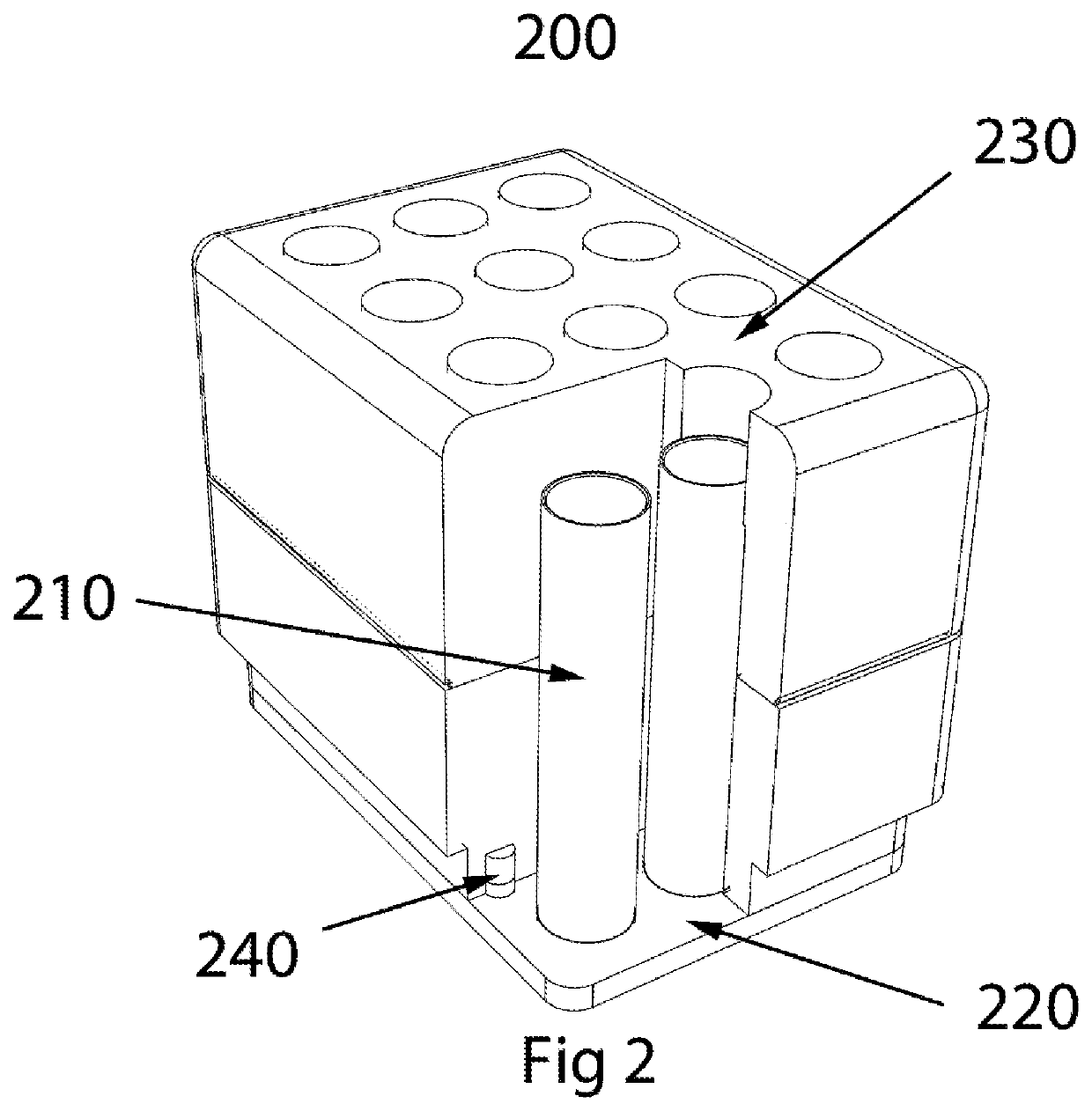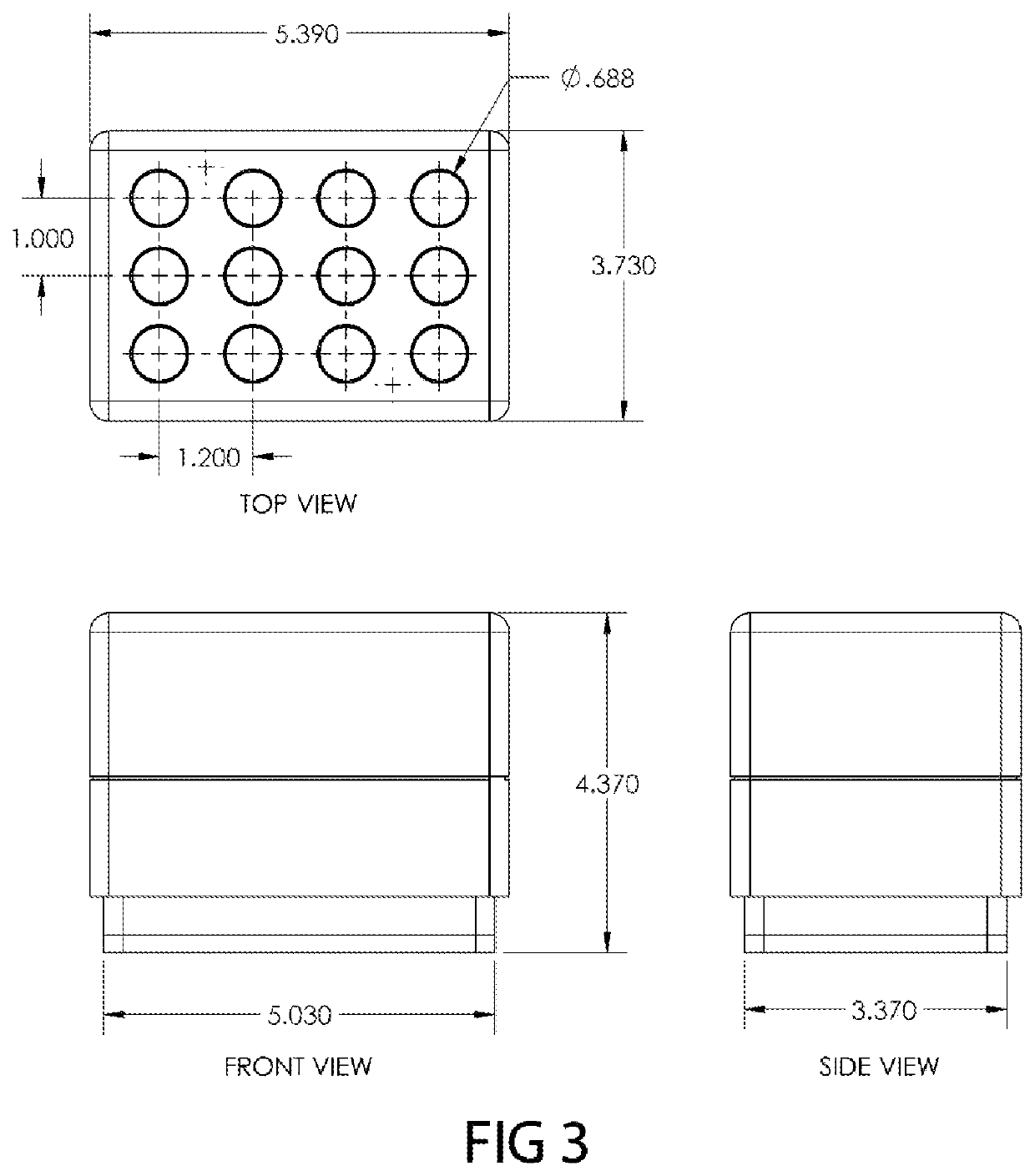Thermal energy transfer device
a technology of thermal energy transfer and heat exchanger, which is applied in the direction of heating or cooling equipment, laboratory equipment, chemistry equipment and processes, etc., can solve the problems of sample spillage and loss, sample contamination, and temperature management of samples becoming more difficul
- Summary
- Abstract
- Description
- Claims
- Application Information
AI Technical Summary
Benefits of technology
Problems solved by technology
Method used
Image
Examples
second embodiment
[0036]a device of the invention is shown in FIGS. 4 through 6. In FIG. 4, a thermo-conductive core 400 comprising four segments of an aluminum extrusion 410 are shown. The extrusion segments are each fastened to the base plate 420 by two screws that engage the screw boss features 430 that are integrated into the extrusion.
[0037]FIG. 5 shows the core comprising the extrusion segments 520 and the base plate 530 of FIG. 4 covered by an insulating shell housing 510.
[0038]The device in FIGS. 4 and 5 has the over-all dimensions shown in FIG. 6 with outside rectangular dimensions of 5.03 in length and 3.37 inches in width. The base has dimensions of 4.73 inches by 3.07 inches. The height of the device including base thickness is 4.33 inches.
third embodiment
[0039]FIG. 7 shows a device of the invention and illustrates how the invention provides thermo-conductive cores for sample vessels of smaller size and greater array density. The device has a core 700 comprising the surrounding thermo-conductive material and a base that may be constructed as an integral unit that is machined directly from a block of thermo-conductive alloy.
[0040]FIG. 8 shows the thermo-conductive core in FIG. 7 as 820 encased in an insulating shell 810. The shell is removable and bonded by a slip friction fit to the core.
[0041]The device in FIGS. 7 and 8 has the over-all dimensions shown in FIG. 9 with outside rectangular dimensions of 5.39 inches in length and 3.73 inches in width. The base has dimensions of 5.03 inches by 3.37 inches. The height of the device including base thickness is 2.09 inches.
PUM
 Login to View More
Login to View More Abstract
Description
Claims
Application Information
 Login to View More
Login to View More - R&D
- Intellectual Property
- Life Sciences
- Materials
- Tech Scout
- Unparalleled Data Quality
- Higher Quality Content
- 60% Fewer Hallucinations
Browse by: Latest US Patents, China's latest patents, Technical Efficacy Thesaurus, Application Domain, Technology Topic, Popular Technical Reports.
© 2025 PatSnap. All rights reserved.Legal|Privacy policy|Modern Slavery Act Transparency Statement|Sitemap|About US| Contact US: help@patsnap.com



